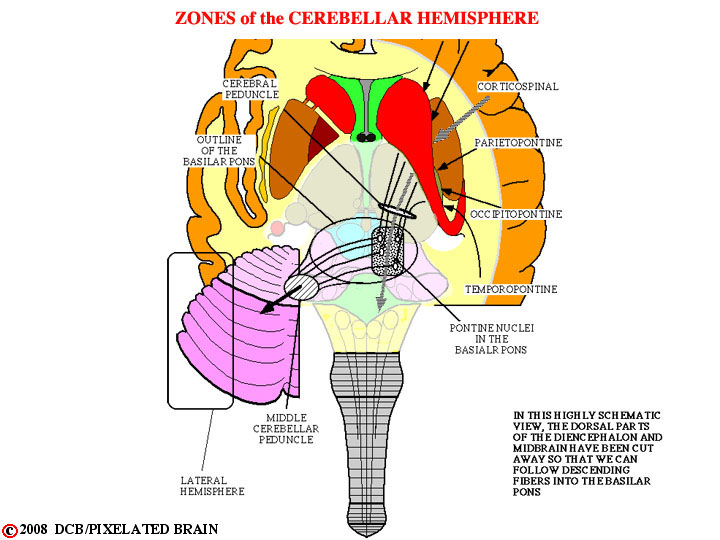
PIXBRAIN HOME _ _ MOD 6 HOME _ _ previous _ _ FIGURE 6-7_ _ next _ _ I WANT TO
____Perhaps 100 msec. before the onset of a movement neural messages, presumably involving the nature of the desired movement, are sent (at least, potentially) from all four lobes of the cerebral hemisphere to the cerebellum. Axons of the neurons involved pass successively through the corona radiata, the internal capsule and the cerebral peduncle to reach the basilar pons. It is a massive projection and - as with most pathways of this sort - it is orderly in nature. Fibers from the frontal lobe (the fronto-pontine pathway) pass through the anterior limb of the internal capsule and then through the medial one fifth of the cerebral peduncle to reach the basilar pons. Fibers from the remaining three lobes pass through the posterior limb of the internal capsule and the lateral one fifth of the cerebral peduncle to reach the same destination. Within the cerebral peduncle these two groups of fibers are separated by the corticospinal tract, occupying the middle three fifths of the peduncle.
____Within the basilar pons the descending fibers from all four lobes terminate by synapsing upon the cell bodies of the nuclei scattered diffusely throughout this region - the so-called pontine nuclei. These neurons relay information to the cerebellum by giving rise to axons which cross the midline, run through the middle cerebellar peduncle and make synaptic contact with granule cells in the cortex of the lateral part of the cerebellar hemisphere. Because of their appearance these axons are called mossy fibers and their specialized region of contact with granule cells is termed a glomerulus